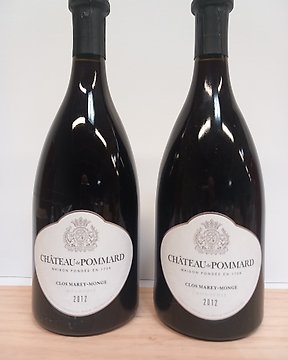
2012 Château de Pommard - Pommard - 2 Pullot (0.7 L)
Nro. 82934967

Nro. 82934967

It's notable that Pommard and its immediate neighbor, Volnay (renowned for its smooth, delicate reds), are less than a mile apart (1400 yards/1.3km, to be precise) yet their wines are so different. Furthermore, the most-southerly vineyards of Pommard are separated from the most-northerly vineyards of Volnay by no more than an imaginary line: the commune boundary that divides the two parishes.
Pommard marks the start of serious Pinot Noir red wine production in the Côte de Beaune. Further north, white wine is produced in quantity only in the town of Beaune, and even there it represents less than 20 percent of total production. Just 8 kilometers (five miles), on the other side of Beaune from Pommard, is the Grand Cru stronghold of Corton, home of the district's finest red wines.
Pommard's reputation
Many in the wine world believe that the best of Pommard's vineyards (namely Les Epenots and Les Rugiens) should be promoted to join Corton in its Grand Cru status. These two sites were once in line for this prestigious classification, but the vignerons (vineyard owners) of the time were wary of the restrictive Grand Cru production laws and declined the offer.
History
Rather aptly for a village so firmly entrenched in viticulture, the name Pommard is a reference to Pomona, the Roman goddess of fruit trees. She is commonly depicted with a pruning knife – a tool of great importance in both ancient Rome and, more recently, in Pommard.
Religion and viticulture are interwoven in the village's wine history in more ways than one. Pommard wine first became known around Europe when the revocation of the Edict of Nantes in 1685 outlawed Protestantism and the village's non-Catholics fled the country.
Thirty years later, the Chateau de Pommard was built around vineyards originally planted by Cistercian monks. The walled Clos Micot vineyard is named after the count responsible for building the chateau, Comte Vivant de Micault. This historic name is spelt in various ways, including these two more-common forms.
Näin ostat Catawikistä
1. Löydä jotain erityistä
2. Tee korkein tarjous
3. Maksa turvallisesti